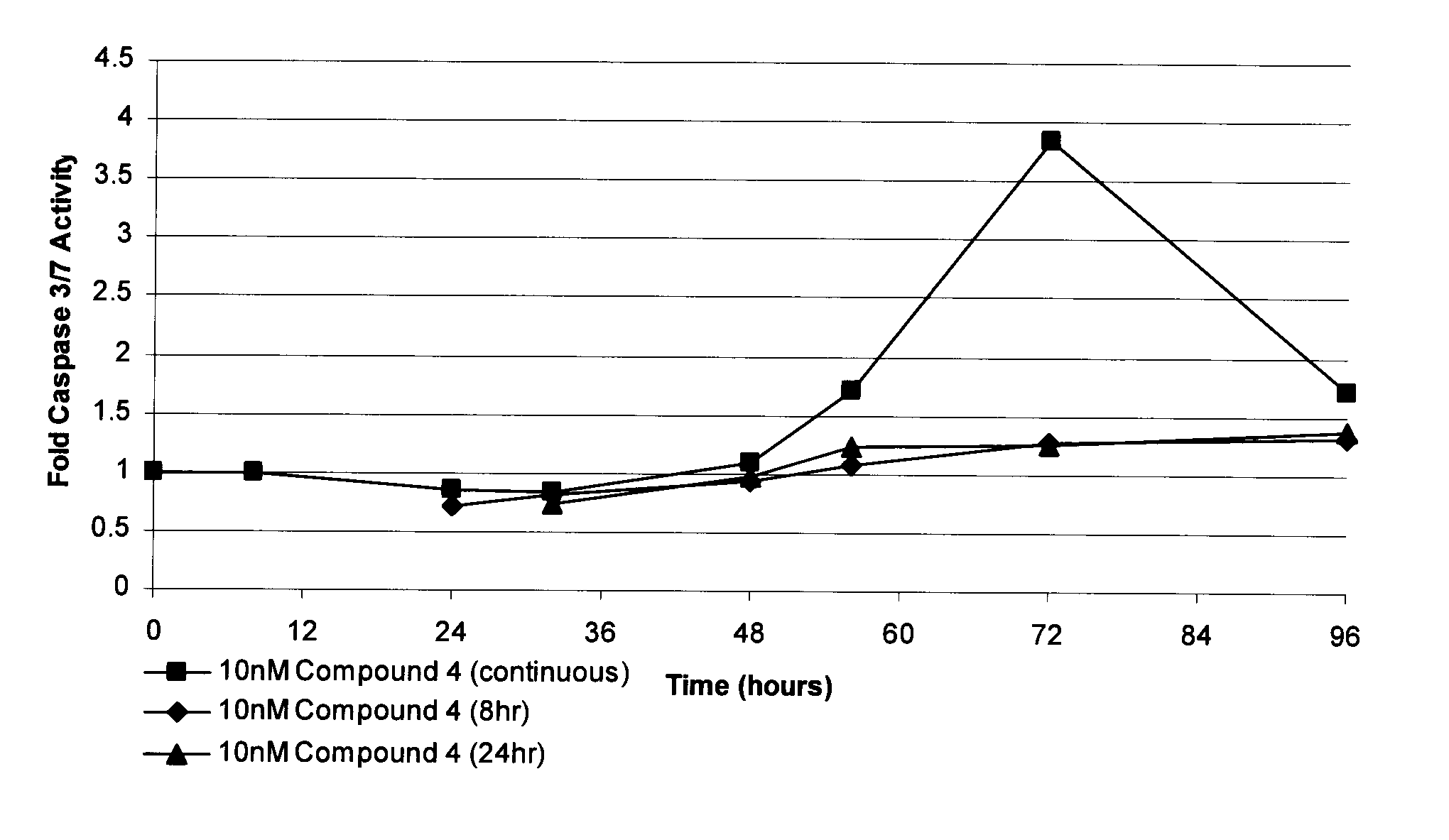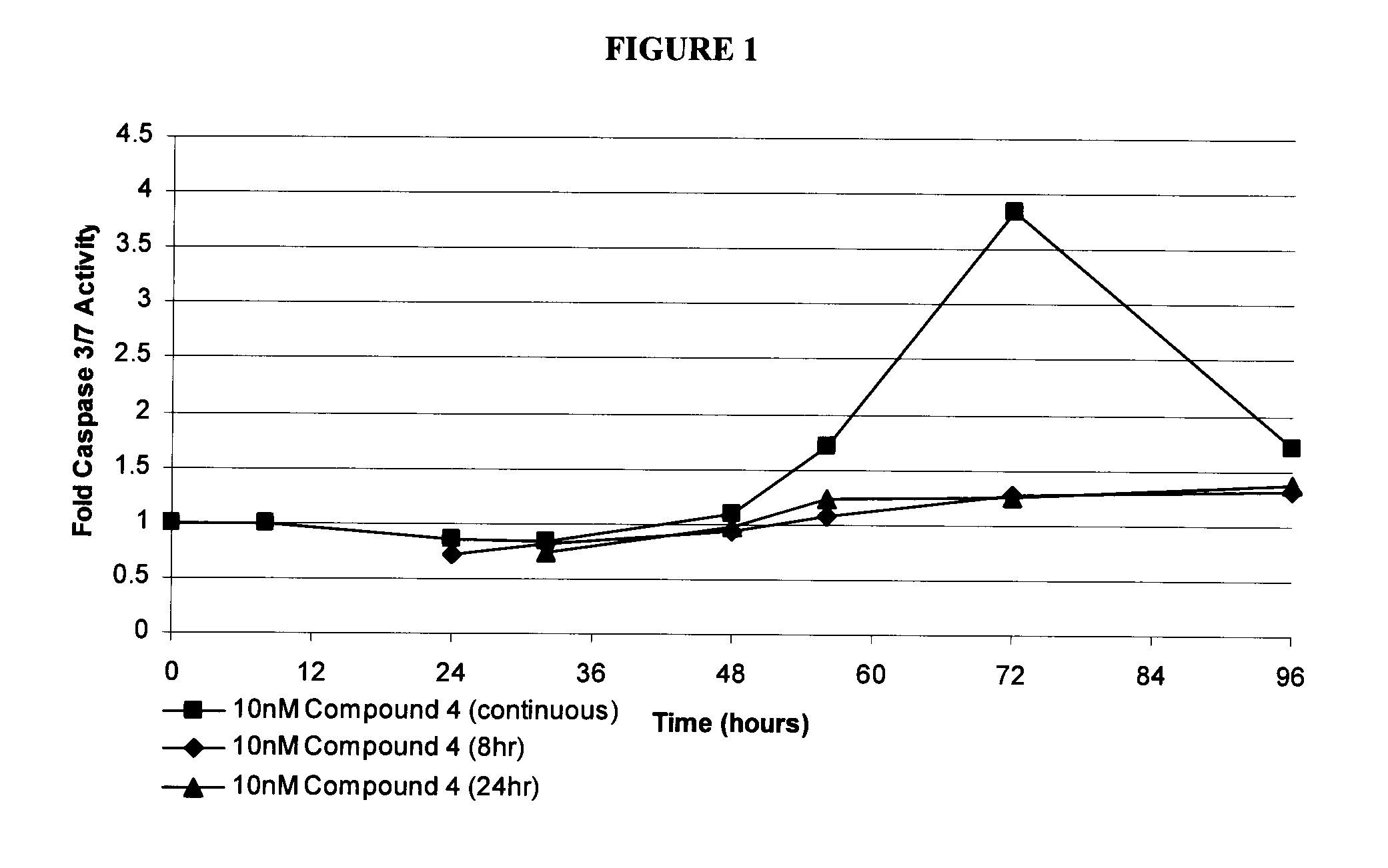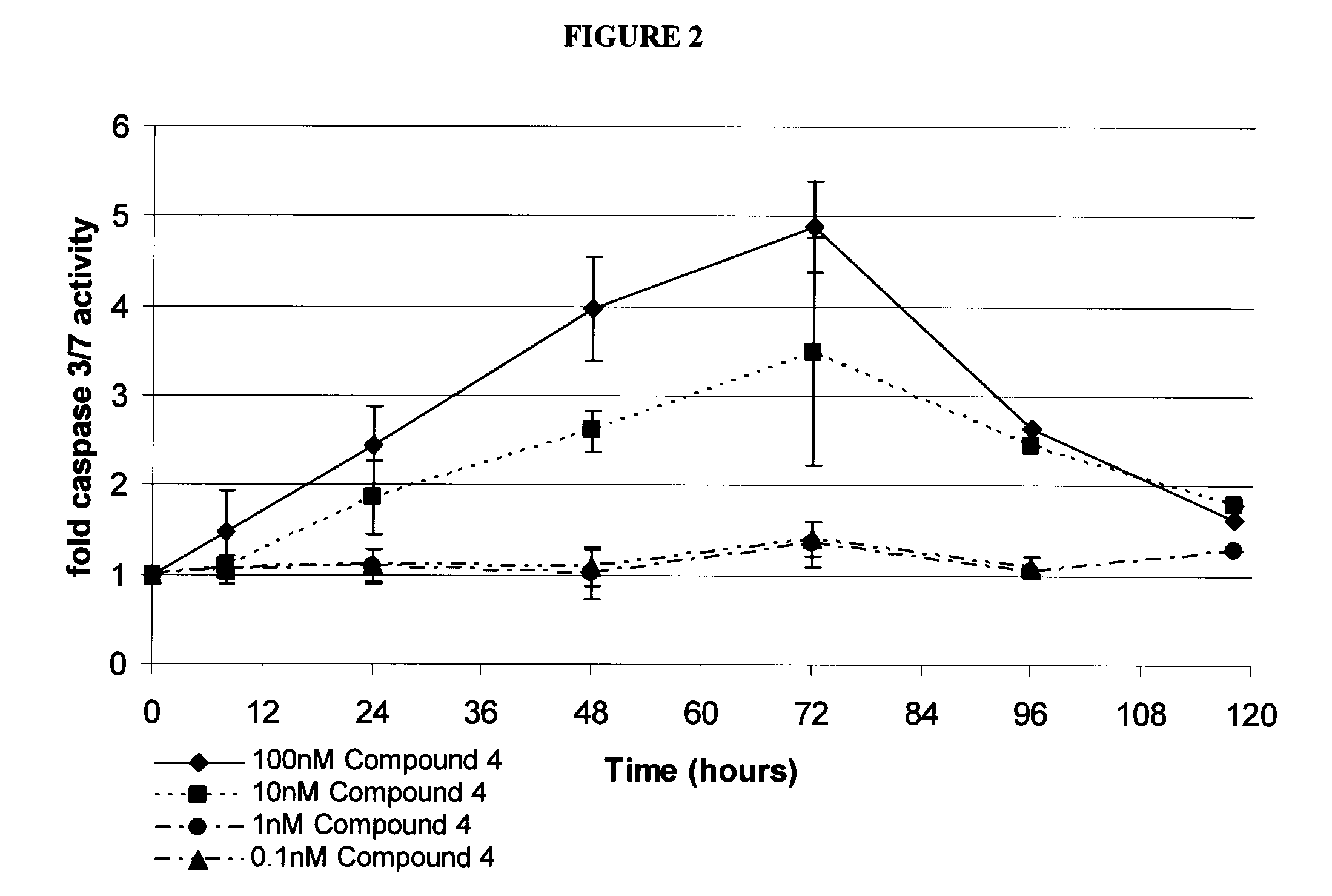Method of Treatment Using Inhibitors of Mitosis
a technology of mitosis and inhibitors, which is applied in the direction of biocide, heterocyclic compound active ingredients, drug compositions, etc., can solve the problems of cell cycle arrest and apoptosis (cell death), different mitosis inhibitors may have different toxicities, etc., and achieve the effect of recovering or subsiding side effects
- Summary
- Abstract
- Description
- Claims
- Application Information
AI Technical Summary
Benefits of technology
Problems solved by technology
Method used
Image
Examples
example 1
[0128]HT-29 cells, treated with either vehicle control (DMSO), or 10 nM Compound 4, were seeded in identical 96-well tissue culture plates. After 8 or 24 hours, Compound 4 was removed from HT-29 cells and replaced with fresh growth medium in order to determine whether apoptosis induction could be prevented. Caspase 3 / 7 activity was measured as reaction product luminescence at the indicated times using CaspaseGlo 3 / 7 reagent (Promega) and a luminometer. Values are reported as caspase 3 / 7 activity of Compound 4-treated cells divided by caspase 3 / 7 activity of DMSO-treated cells. The results are shown in FIG. 1.
example 2
Apoptosis in HT-29 Following Continuous Treatment with Compound 4
[0129]HT-29 cells, continuously treated with either vehicle control (DMSO), or 100 nM, 10 nM, 1 nM, or 0.1 nM Compound 4, were seeded in identical 96-well tissue culture plates. Caspase 3 / 7 activity was measured as luminescent reaction product at the indicated times using CaspaseGlo 3 / 7 reagent (Promega) and a luminometer. Values are reported as caspase 3 / 7 activity of Compound 4-treated cells divided by caspase 3 / 7 activity of DMSO-treated cells. Data include mean and standard deviation values from 4 independent experiments. The results are shown in FIG. 2.
example 3
Apoptosis in RPMI 8226
[0130]RPMI 8226 cells, treated with either vehicle control (DMSO), 10 nM
[0131]Compound 4, or 10 nM vincristine were seeded in identical 96-well tissue culture plates. Caspase 3 / 7 activity was measured as luminescent reaction product at the indicated times using CaspaseGlo 3 / 7 reagent (Promega) and a luminometer. Values are reported as caspase 3 / 7 activity of drug-treated cells divided by caspase 3 / 7 activity of DMSO-treated cells. Data include mean and standard deviation values from 4 independent experiments. The results are shown in FIG. 3.
PUM
| Property | Measurement | Unit |
|---|---|---|
| volume | aaaaa | aaaaa |
| volume | aaaaa | aaaaa |
| volume | aaaaa | aaaaa |
Abstract
Description
Claims
Application Information
 Login to View More
Login to View More - R&D
- Intellectual Property
- Life Sciences
- Materials
- Tech Scout
- Unparalleled Data Quality
- Higher Quality Content
- 60% Fewer Hallucinations
Browse by: Latest US Patents, China's latest patents, Technical Efficacy Thesaurus, Application Domain, Technology Topic, Popular Technical Reports.
© 2025 PatSnap. All rights reserved.Legal|Privacy policy|Modern Slavery Act Transparency Statement|Sitemap|About US| Contact US: help@patsnap.com



